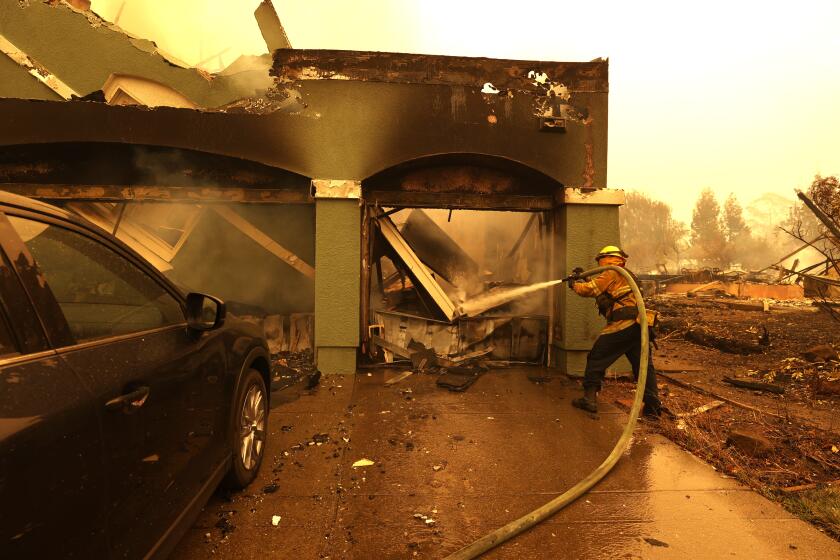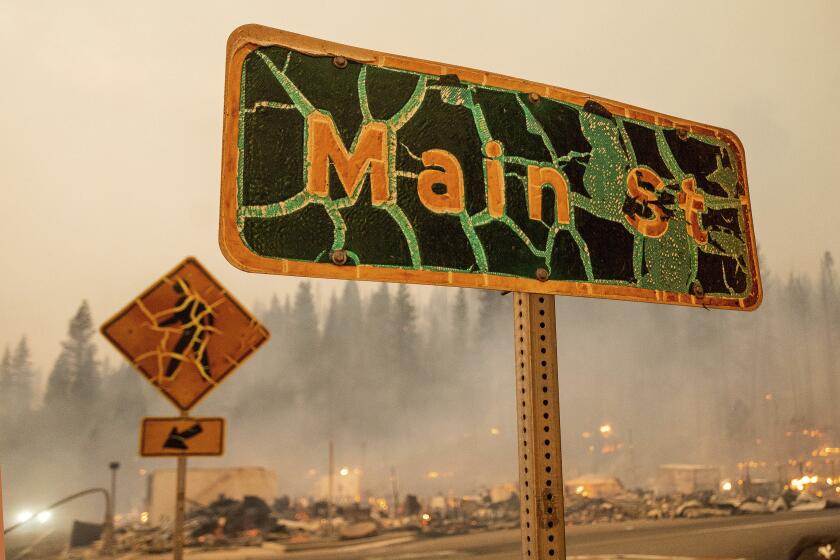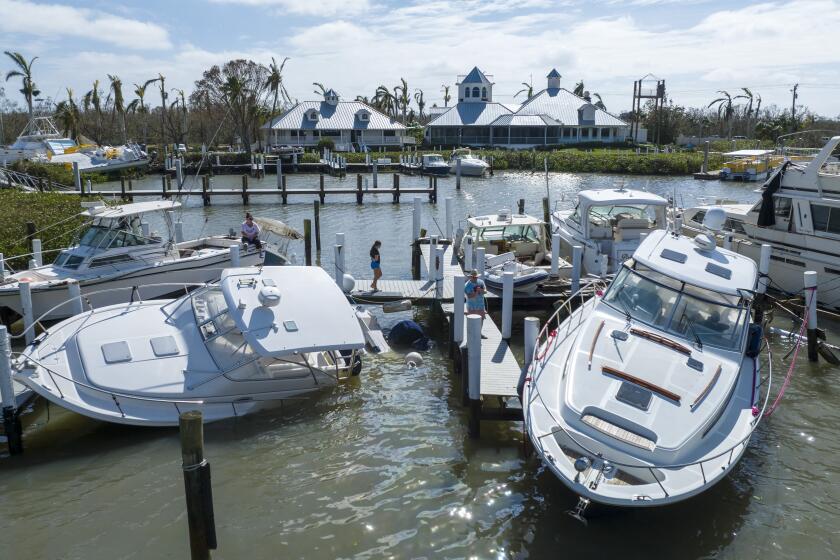Column: State Farm is right. California can’t keep building housing in high-risk places

- Share via
Back in January, on a dark night of pelting rain, Erica Lopez Bedolla had only minutes to evacuate her family from the impoverished Central Valley town of Planada after a levee broke.
“It was so quick,” she told our Times colleague Jessica Garrison, recalling the speed with which the water rushed into her town and then her home, destroying almost everything and displacing hundreds. But after a few months, Bedolla already felt as if the rest of California had “forgotten this happened.”
In a community of mostly undocumented farmworkers, no one is sure whether Planada will recover. But if it does, and if families like the Bedollas do rebuild, we can be certain that the town and its beleaguered residents will remain vulnerable to future floods.
From Planada to Paradise, the urgent fallout of climate change on California’s already terrible housing crisis is undeniable — except perhaps to our state politicians who pay it lip service but have dodged the big questions about where we should build and rebuild in the future.
Our most vulnerable communities often lie in our most vulnerable regions: mountains marred by years of unprecedented wildfires, or Central Valley farm fields drowned in record rains and now epic snowmelt. It’s a big part of the reason several insurance companies are refusing to issue new policies and otherwise limiting their financial exposure in the Golden State.
State Farm, California’s largest home insurer, announced in May that it would no longer take on new residential and commercial properties, a devastating blow that will be felt most keenly in fire-prone areas where coverage is costly and hard to find. Flood insurance typically has to be purchased separately.
Allstate, another major insurer, also has pulled back in California and, last week, declined to reverse course even as state insurance officials agreed to let the company raise premiums by 4%.
California’s biggest seller of homeowners insurance says regulations and wildfires make new policies a financial loser. But there are reasons to question that explanation.
Such business decisions should prompt California’s leaders to rethink land-use policies. After all, losing access to insurance creates another barrier to homeownership by making it impossible for most people to get a mortgage, compounding our housing crisis.
But once again, like Florida — a red state our political leaders love to denigrate — California is ignoring the obvious, knowing the consequences of doing so will be catastrophic.
“The reality is most people across the West live in zones that are on some risk map,” said Lisa Dale, a lecturer at Columbia University’s Climate School.
Indeed, there are few places left to live in California that are safe from climate disasters. And yet, in an attempt to help the tens of thousands of people sleeping on our streets and the millions more at risk of getting priced out of their apartments and ending up in a tent, Gov. Gavin Newsom has started cracking down on cities and counties that refuse to build more affordable housing.
His administration has famously made an example of intransigent Huntington Beach, suing the Orange County city for violating state housing laws.
The urgency is refreshing after years of state officials letting cities and counties promise to build but then failing to deliver housing at the rate needed to address a crucial shortage that is driving sky-high rents, homelessness and an exodus of residents to more affordable states.
California needs a plan for how and where we will live in the future.
The problem is Newsom and his administration have required little oversight of where all this housing is being built. Nor have they communicated a cohesive philosophy about mitigating the current and future development risks linked to climate change.
Instead, the decisions underpinning this nexus of climate and housing have largely been left to local governments, with county supervisors and city councils navigating the complicated and emotional terrain of determining where people can and cannot safely live — a topic we wrote about last year after the Dixie fire leveled the Northern California community of Greenville.
Near Tulare County, for example, record precipitation has brought back Tulare Lake, a body of water the size of Lake Tahoe. Selecting sites for new housing, as the state has ordered the county to do, means balancing the risk of flooding with the need to have agricultural workers near farms — even if those farms are in a floodplain.
“We’ve got to make sure that we’ve got housing that’s available, affordable and close to the workplace,” Supervisor Pete Vander Poel III told us, explaining that a commute from the county’s largest city to “a dairy or a ranch in Allensworth, that round trip is over 100 miles.”
In Monterey County, where a long-neglected levee failed in March, inundating the farmworker town of Pajaro, Supervisor Luis Alejo said he has been focused on approving housing projects that can better withstand flooding. That’s a crucial issue throughout California, given that only about 2% of homeowners have flood insurance — and through a federal program stretched to its limits.
Under state law and the governor’s more aggressive goals, the county must build 35,000 units in the next eight years, meaning supervisors are trying to be clear-eyed about both future risks and the current emergency.
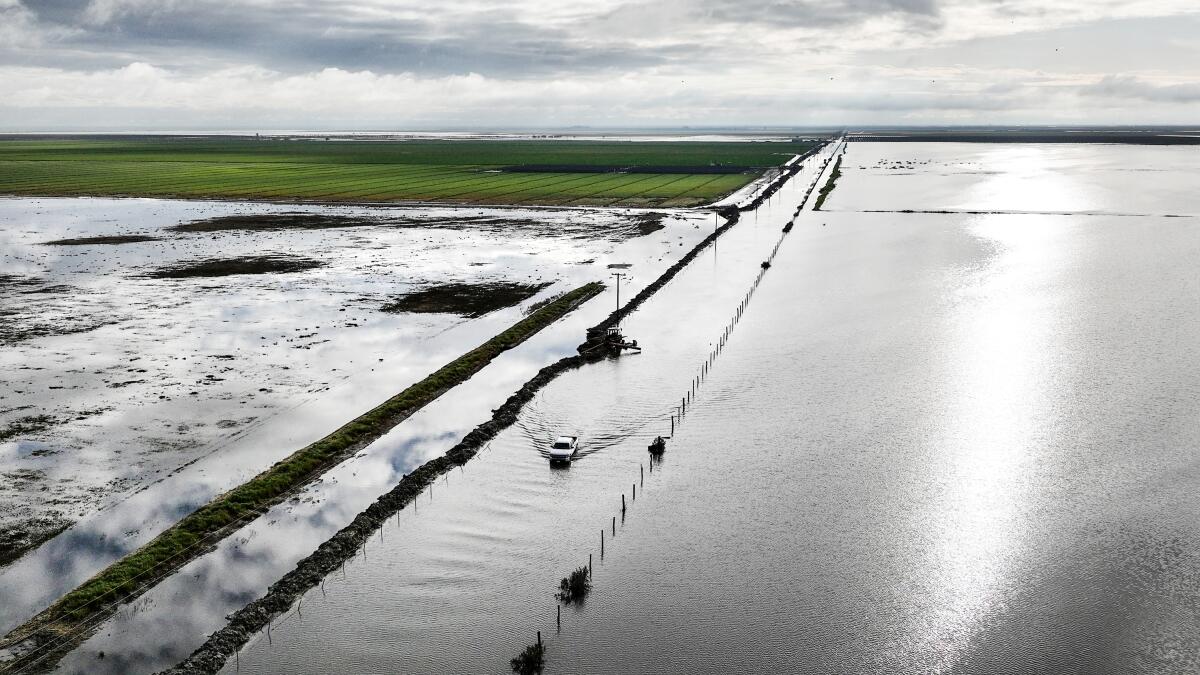
“To tell a disadvantaged community that because there’s a floodplain they cannot build at all,” Alejo said, pausing to find the right words, “I think that is putting limitations on a community. They love living in Pajaro. They want to see investment. They want to see more housing and businesses come here. But I think in moving forward, housing and businesses have to be designed smarter.”
What’s “smarter”? In many ways, officials in Monterey County, as in Tulare County, are making it up as they go along. Meanwhile, climate change is accelerating.
After a winter of record precipitation, this summer’s “big melt” may leave more people knee-deep in the misery of waterlogged homes. And, experts warn, one good rainy season might reduce the risk of wildfire this summer, but it won’t keep us safe from future conflagrations. Climate experts say weather whiplash, ricocheting between extremes, should be our expectation for life in the West in coming decades.
In a 2022 report from the Legislative Analyst’s Office, lawmakers were told they will need to acknowledge the significance of climate change on housing policy and take a greater role in crafting that policy.
“In recent years, much of the new housing construction in the state has occurred in areas that are at significant risk of the effects of climate change,” the report warned, noting that in the last decade, 6 in 10 of the fastest growing counties are in areas of the Central Valley and Inland Empire that are at rising risk for excessive heat — and now for flooding.
In 2022, California had nearly 1.3 million homes in high-risk fire areas, according to the Insurance Information Institute. More than 1.5 million California properties have a greater than 26% chance of being severely hit by flooding during the next 30 years, according to Risk Factor, a site that tracks climate-related risk across the U.S.
And a 2020 study found that the number of affordable housing units vulnerable to coastal flooding in the state will increase by 40% by 2050. Risk Factor also found that more than 340,000 properties sit in areas threatened by extreme heat days, another climate-change emergency.
That’s a lot of potential misery and ruin. Although State Farm, Allstate and other insurers have complex reasons for cutting back, they aren’t ignoring those future losses the way California is. Rather than leading, the state seems to be following the Florida model by ignoring reality until disaster forces us to pay for our mistakes.
Allowing our new affordable housing stock to be built or rebuilt in high-risk areas is an abdication of governmental responsibility and a cheat on Californians who mistakenly believe they are buying a home as a generational investment.
As the insurance companies know, a house is not affordable, for renters or owners, if it is destroyed by fire or flood.
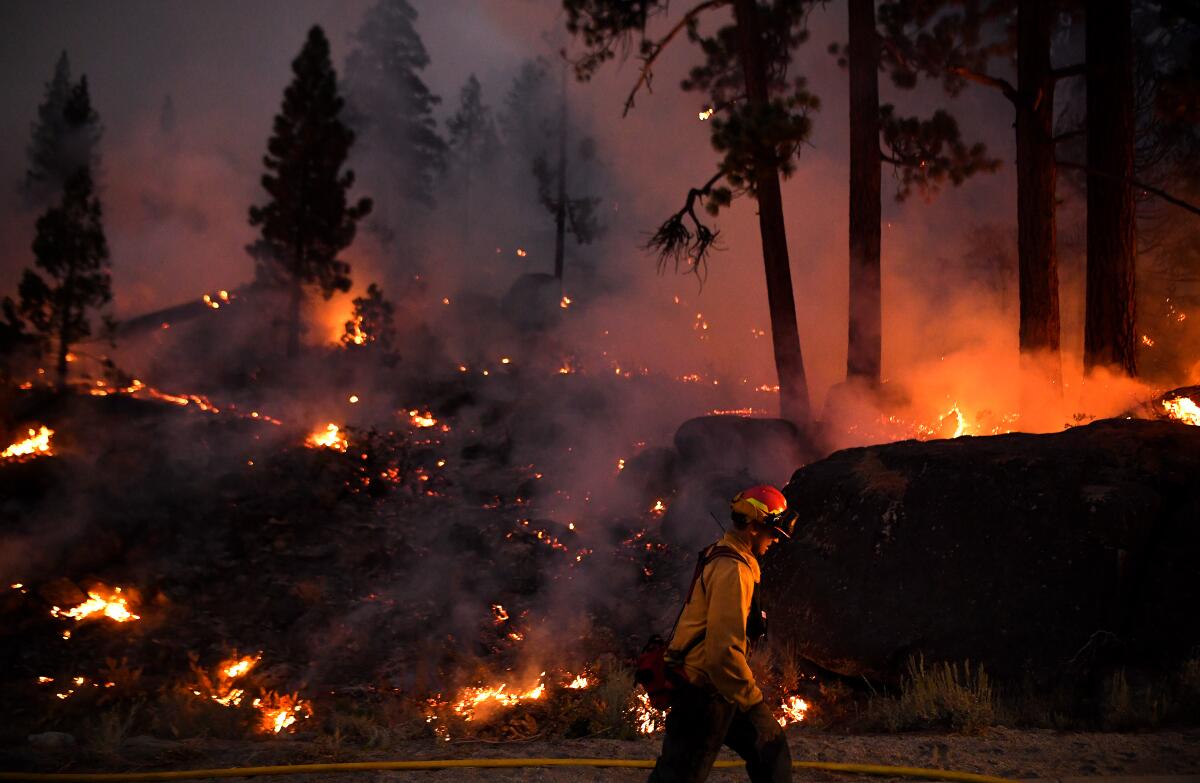
It is time for California to create a comprehensive land-use policy at the state level — or at least engage in an honest and robust conversation — that ensures our affordable housing isn’t just affordable but as safe as we can make it from the known dangers of climate change. And, dare we say, this must include a discussion of managed retreat, not just from areas of our forests that will grow hotter, dryer and more dangerous in coming decades, but from coastal communities where sea level rise is already toppling homes.
We aren’t saying that the state has done nothing, and we acknowledge there are no easy answers. The governor and lawmakers are walking a tightrope between the desperate need for more housing and the realities of climate risk.
There are programs and grants that encourage infill development in urban areas; a new generation of fire-risk maps that come with regulations about how we build in those areas; and more technical guidance from the state for local officials to use when deciding whether to approve new developments.
State Atty. Gen. Rob Bonta is emerging as a leader in this area, bringing at least two lawsuits — one in Lake County and one in San Diego — against developments where risks may not have been properly evaluated.
After Hurricane Ian, readers rightly asked: Why is rebuilding in coastal Florida any different than rebuilding for poor Californians after wildfires?
And Insurance Commissioner Ricardo Lara championed a law in effect this year that requires the disclosure of a home’s risk score — the measure insurance companies use in evaluating how vulnerable a property is — in an attempt to help consumers grasp exactly how much of a chance they have of losing their home to disaster, whether in the wilds of Humboldt County or the combustible hillsides of Malibu.
But we are also sending mixed messages, providing fire insurance for high-risk properties through the FAIR plan, created by state statute, when other options are gone, and emphasizing an urgency to #rebuild at all costs when disaster does strike. As our colleague Sam Dean reported, the FAIR plan has doubled in size since 2018, leaving more consumers with coverage that is limited and expensive.
Although existing homeowners may need that safety net, new communities and homes that fail to properly mitigate for dangers should be excluded. Because as Columbia’s Dale said, while such policies benefit vulnerable homeowners, they also “obscure real risk.”
And, really, there you have it. It’s hard and unpleasant, but Newsom should take leadership on building not just affordable housing but a California ready for our changing climate.
If we don’t, we are investing in failure. Because Californians don’t just need homes, they need homes that will last.
More to Read
Sign up for Essential California
The most important California stories and recommendations in your inbox every morning.
You may occasionally receive promotional content from the Los Angeles Times.
